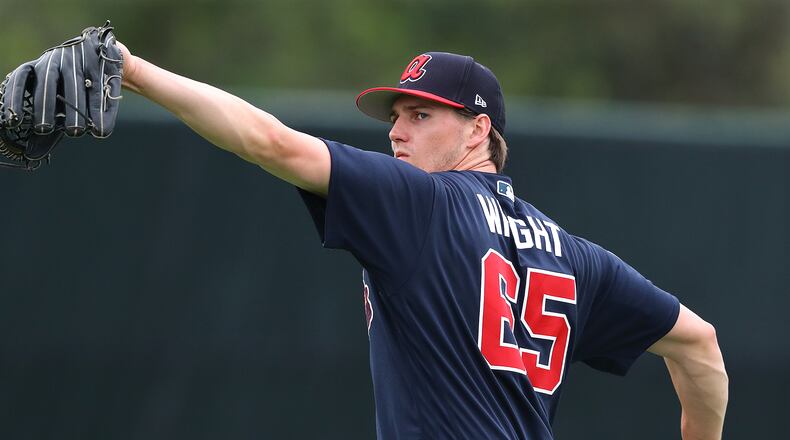Kyle Wright caught an Uber from the airport to Dodger Stadium on Wednesday afternoon. He’d just flown in, informed earlier that morning he’d be rejoining the major-league club. The Braves needed a fresh long-relief option and it was Wright’s turn to pitch in Triple-A.
Suitcase by his side, Wright – sporting more facial hair than usual (“trying something different,” he says) – said his look wasn’t his only alteration. Wright is more mechanically sound than before, thanks to the keen eye of Braves minor-league pitching coordinator Dom Chiti and a minor tweak that helps him stay lower in the strike zone.
The Vanderbilt-produced righty might be the organization’s best pitching prospect, but it was a surprise he broke camp with the club. He had an excellent spring, exhibiting pinpoint control and presenting wise beyond his 23 years on and off the field.
Wright made three starts in the majors, warranting mixed results. He had a 7.07 ERA with 11 strikeouts against 10 walks before his last outing – giving up six earned runs in 3-2/3 innings against the Mets – forced the Braves to send him back to Triple-A.
In his first Triple-A start, Wright allowed four runs in the first inning. Chiti, the Braves’ pitching emperor who’s had an indelible effect on their young starters, thought Wright could’ve been tipping his pitches. When he stopped wiggling the ball and stayed tighter, Wright noticed a difference.
“I cleaned that up and had a clean rest of the outing,” he said. “Whether that’s what it was or not, I don’t know. But I got that taken care of.”
Wright felt better in his second outing, though the third was less encouraging. He struggled in the second inning, ending up with eight earned runs in just 1-2/3 frames. When Triple-A pitching coach Mike Maroth presented his heat map, Wright saw that once again he was living too high in the zone.
“I was throwing the ball harder than I ever had, to be honest with you, so (struggling) was a little puzzling to me,” he said. “I looked at the heat map and literally every pitch was up. I hadn’t been down in the zone at all. So I think guys were setting their sights up and hitting it.”
In his delivery, Wright’s body was way ahead of his arm, pushing his pitches upwards.
“So I tried to stay back a lot more,” Wright said. “Get a little higher leg kick that’s going to keep me over the rubber. Working downhill instead of everything pushing up. Whenever I did that, I threw a lot more strikes.”
He had solid results in his fourth start, allowing three runs over seven innings. Wright felt he could’ve gone longer if he was more stretched out. When his four-seamer and two-seamer are playing down, it opens up his other pitches.
Wright has revisited his three major-league starts. Catcher Brian McCann was the first to point out how he kept trending towards the upper portion of the zone, especially in his final start against the Mets.
“Everything started to leak up,” Wright said. “I talked to McCann about that, he saw the same thing. He said the stuff was really good but it was up in the zone. Have to get that four-seam down and away. That two-seam down in general. I let those play and hopefully they open up my other pitches.
“One little mechanical tweak that helped me get the ball down a lot. It’s just been a process but slowly figuring it out.”
Wright is just here as bullpen insurance, potentially for a very brief time, but it probably won’t be long before he’s called upon again to start. If he recaptures what he displayed in spring training, he won’t have many more late-night calls mandating cross-country travel.
About the Author
Keep Reading
The Latest
Featured



